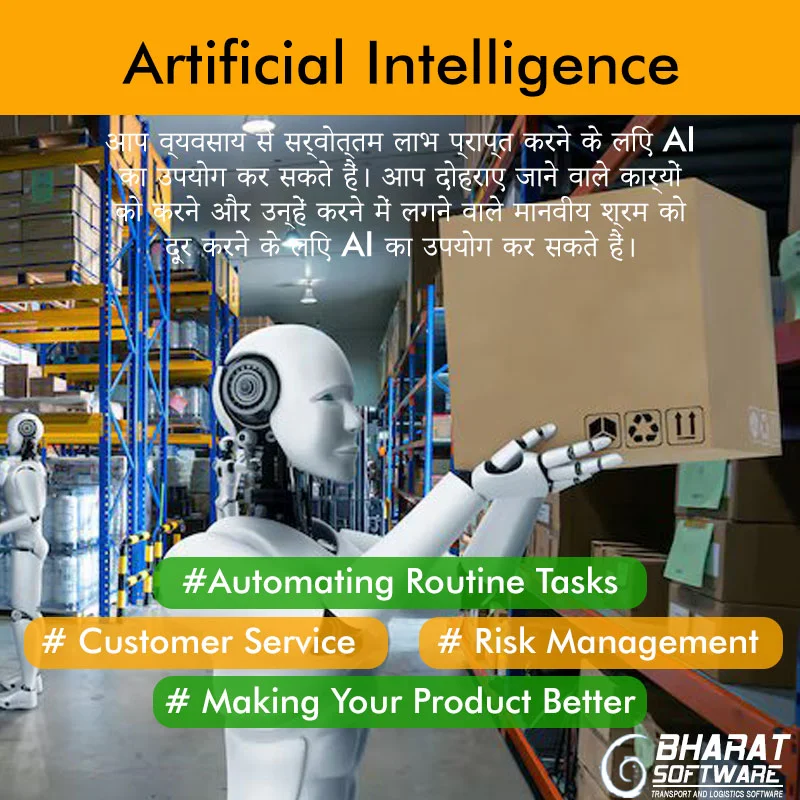Artificial Intelligence (AI) is the new trend every business should follow. It will not only make your whole work a lot easier but also make the business a lot better. You can power your entire business using AI. For that, you will need to ensure that you are using the AI in the right way.
This is a complete guide where we will see how you can use AI for business and a few examples that will help you understand the entire work. So, you can use these techniques for your business.
(a) Data Based Decision
The first and the best use of AI is to make the data-based decision.
You can feed in all the current data to your AI and it will help you make the decision based on the data. Today, if you’re using any of the management tools for your business, they will have AI integrated into their software. So, you can simply use their AI to take advantage of these. You can make decisions based on the data they provide.
So, the AI will fetch the data directly from the management software and it will give you insights based on the data you have. It will then help you make the decision based on what is the previous data. When you do that, you will see the decisions you make are more powerful and give you better results as compared to the decisions taken directly by you. You can mix your opinions with the AI to get the best results.
(b) Automating Routine Tasks
Every business has a lot of repetitive tasks that take most of your time.
You will have to do the same thing again and again. This is one of the most time-consuming parts of your business. So, you will not only spend a lot of time here, but it will also take out most of your revenue as you’re not doing the productive work. Instead, you can outsource these tasks to AI, and you can focus on the important tasks that will help you in getting the best out of your day.
AI can handle most of the tasks for you. These repetitive tasks can be done in just a couple of seconds without you having to spend time on them. It will not only do the tasks for you. Instead, AI can ensure that these tasks are properly done with accurate information. If needed, the AI tool can also classify these tasks based on the conditions you give. In simple words, AI is capable of managing the entire thing for you in the easiest way possible. You don’t need to spend any time here.
(c) Customer Service
Customer service is the best way to get the maximum revenue from the companies. When you satisfy the customer, they will buy from you.
To satisfy the customer, there are two main ways. You will first need to create the best product for your customers. You can use data-based decisions from it.
Once you do it, you can start with the next step which is implementing AI for customer service. The simplest way you can do this is to use the chat-based service. The chat-based service for your customers ensures that all of your customer’s queries are heard properly and answered in the best way possible before it comes to an actual human.
The AI will use your documentation of company policy to answer those questions. For example, if you’re an eCommerce store and people have questions about the order delivery time, the AI can answer them based on the data of their order.
In the same way, logistics businesses can use AI to help customers track their orders. If they have any small issues with hat orders, they can use AI to ask any questions. You can even add an option to talk to a real human if the AI can’t help them.
(d) Making Your Product Better
Today, AI can be implemented anywhere. It can start with the tech and end up doing the most tedious tasks ever made. So, you can implement AI to make the product better. You can start with the basic generative AI features to make the tech better. It helps you in implementing new features in the tech part as well as it gives you better creative ideas you can implement.
We would recommend that you implement AI to communicate with multiple apps in the tech to ensure proper connectivity. For example, if your logistics company, you can implement AI and allow the B2B customers to get the best options for a cheaper and better delivery experience. Implementing AI can be expensive. So, make sure that you’re using it properly. An IT Software company can help you in implementing it properly.
(e) Risk Management
Lastly, you should use AI for risk management.
Every business involves risks. These risks can be of different types depending on the type of business and the scale of your business. In some cases, this is the financial risk while in some cases, it could be because of the staff and other options.
Either way, you can surely implement AI here. To begin with, it can help you analyze your financial transactions and accounts to guide you better with cash and assets. It can help you remove the liabilities that you might have, or you will possibly make. With this, you can save more money from expenses just by implementing AI.
In the same way, it can analyze the staff performance and give you the data on their strength and weaknesses. Once you identify the strengths and weaknesses, you can fix them by providing them training or you can move/shift them to a different department.
This will remove the employee risks. When the employees are satisfied, they will work better and harder for the company. When the employees work hard, you will get more revenue out of your business.
Final Words
To conclude, this is how you can use AI to get the best out of the business. You can AI to do the repetitive tasks and remove the human labor of doing it. You can make data-based decisions as AI will give you readable data from the mess of the data. It can find you the right insights and information you need to make any decision.
Further, it will help you in mitigating the risks and improving customer experience. The key to any business is to ensure that your customers and employees are happy. You can use AI for both of them. Therefore, it’s time to implement AI in your business.

Rishit Bhatt is a content strategist and a professional writer with a keen interest in technology and tech-enabled businesses. He aims to help businesses integrate tech into their on-premises infrastructure with technical documentation and helpful articles.

